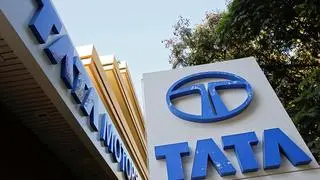India as a country has stood out as a contrarian in the global arena. When the rest of the world was busy printing currency during the pandemic, we opted to put money directly into people’s (the ones who needed aid) pockets. When the Federal Reserve and European Central Bank started moving up interest rates, we didn’t rush in that direction immediately. Now, despite severe banking crises emanating in the US and Switzerland, largely owing to the failed banks not being able to cope up with the sudden increase in interest rates, central banks recently demonstrated their commitment to increase rates.
India’s Reserve Bank of India acted differently; just like it has done several times in the past.
Not moving in tandem with the western counterparts, the monetary policy committee (MPC) constituted by the RBI decided to take a pause on rate hike. To quote Michael Patra, the deputy governor, RBI, the stance taken by the MPC on Thursday will be valid till 10 am of June 8. Given that we’ve had 250 basis points increase in repo rates or 290 bps including April’s 40 bps increase in SDF, RBI hasn’t been behind the curve on the course correction path.
The intent of the MPC seems to be to gauge the effectiveness of the rate hikes taken in the past year. Considering that India is on a better wicket on two aspects - inflation and currency management, the decision to ‘review and revisit’ is acceptable.
Meanwhile, even the large industrialists of the country were lobbying for a pause in rate as committing to investments in a steeply increasing interest rate wasn’t viable according to them. Considering that the pause has come just when India Inc resets it’s outlook and target for FY24, it’s a pro-growth and pro-private capex decision by the MPC.
Read more: Highlights of RBI's monetary policy statement
More importantly, FY24 inflation expectation looking a lot more sober than the previous year’s (yet outside the 4 per cent tolerance level) and Indian rupee somewhat stabilising in the ₹81–82 range also supports the MPC’s decision. It’s equally pertinent to note that the interest rate differential between the Fed and RBI has steadily narrowed from 4 per cent to just about 1.5 per cent over the last 15 months, thereby placing the rupee at a stronger footing than before.
In simple words, until even six months back, the RBI was left with little option but to hike rates in tandem with the Fed for currency and inflation management. Today, it had a wider headroom to work with.
To say that we’ve reached that peak of the rate cycle or hike, could not just be foolhardy, but also counterproductive for the economy.
Tightrope walk
For instance, the banking system saw the first real signs of slowdown in credit offtake in February. At 15.9 per cent year-on-year growth, the graph noticeably tilted downwards as per the latest data. The retail loan growth at 20.4 per cent for the period suggests that it has perhaps peaked and may plateau at these levels for a while. However, if unsecured loans (where the rate hikes haven’t been exacting like mortgages) continue to grow faster than secured loans as it has been happening since 2021, that may not bode well from an inflation management perspective. Nonetheless, if the overall demand for loans tapers and inflation rate don’t follow the trajectory charted by the RBI, it would put us in a soup.
For now, what offers some relief is that some of large consumer companies are reducing prices on soaps, detergents and personal consumables. It’s the first sign that companies are willing to pass on the marginal relief on raw material costs. It needs to be seen if it translates to reduction in food and oil prices for it to move the needle on inflation.
When the MPC meets in June, clarity should emerge on these aspects. It would be interesting to see if June’s MPC action would yet again defy its larger counterparts considering that the Fed is expected to pause hikes in June.









Comments
Comments have to be in English, and in full sentences. They cannot be abusive or personal. Please abide by our community guidelines for posting your comments.
We have migrated to a new commenting platform. If you are already a registered user of TheHindu Businessline and logged in, you may continue to engage with our articles. If you do not have an account please register and login to post comments. Users can access their older comments by logging into their accounts on Vuukle.